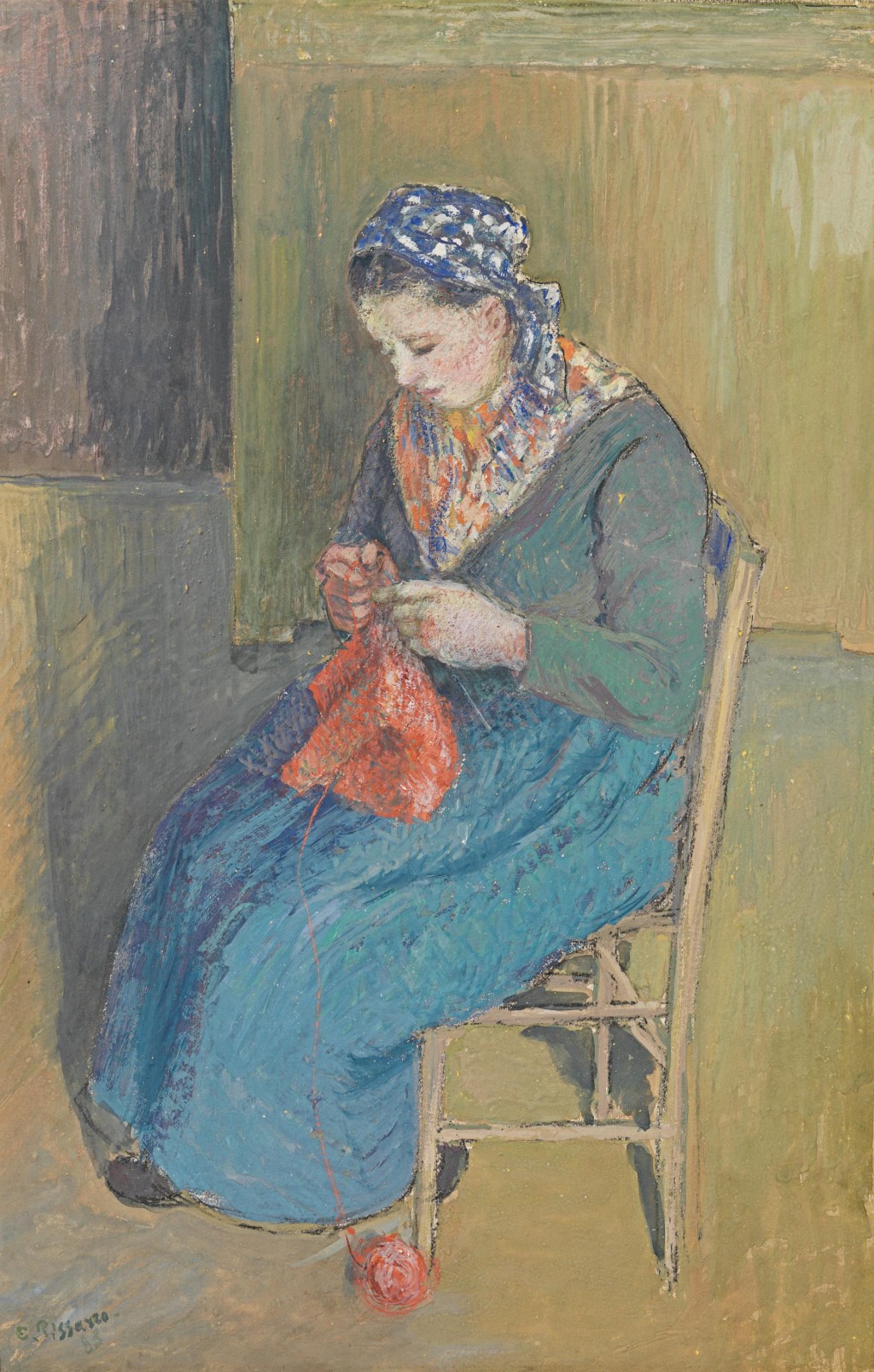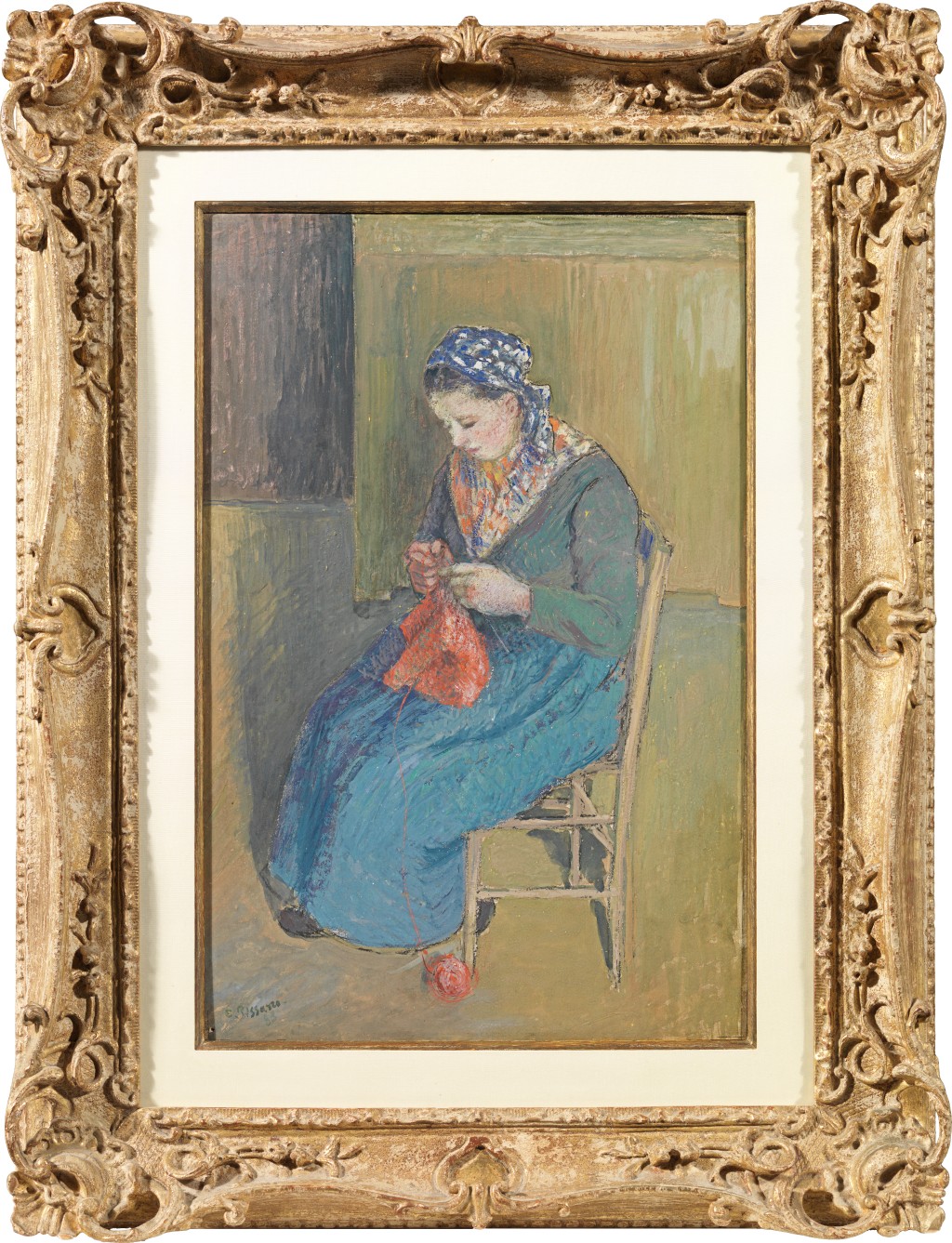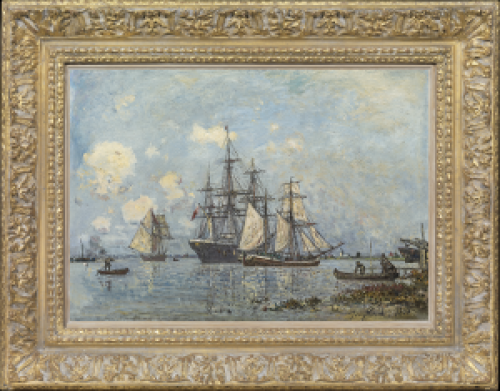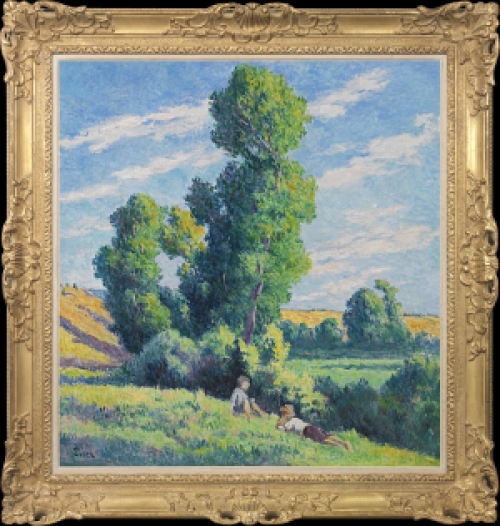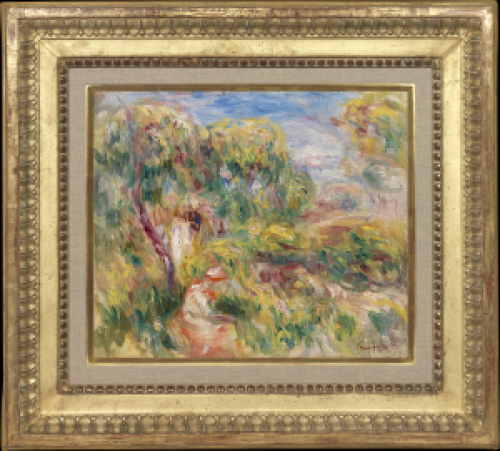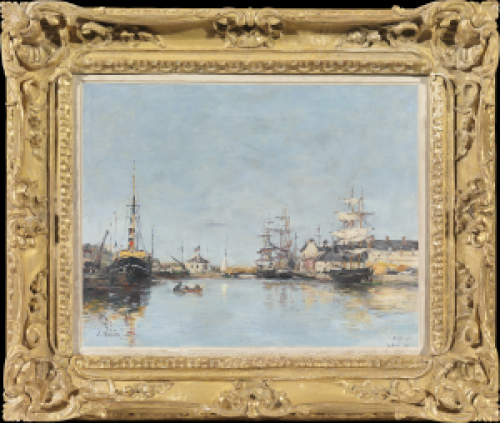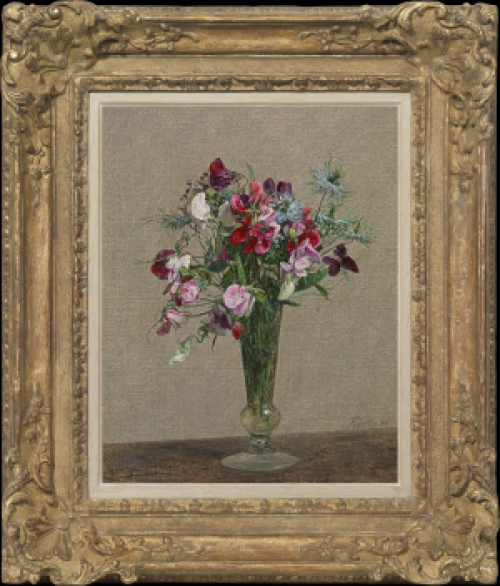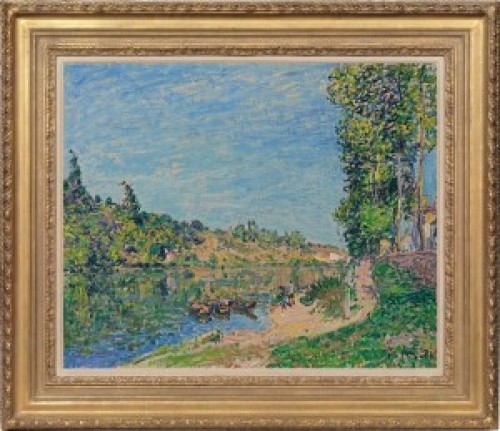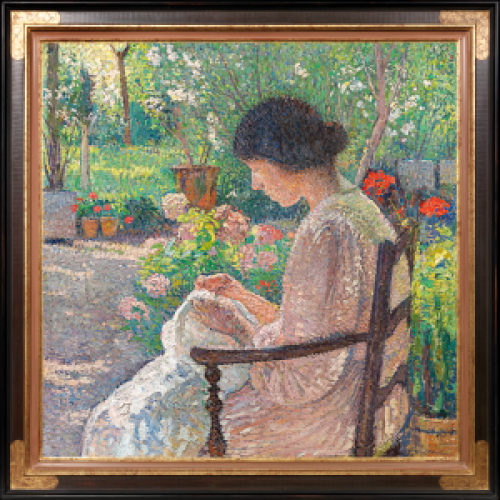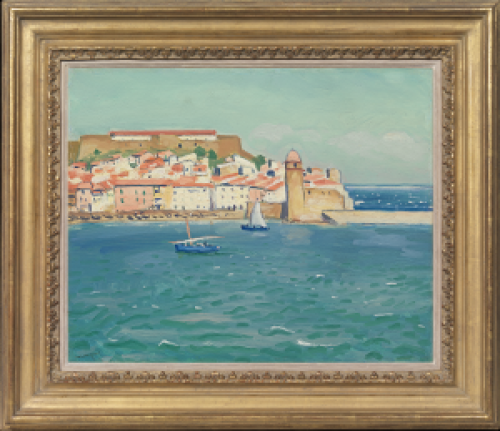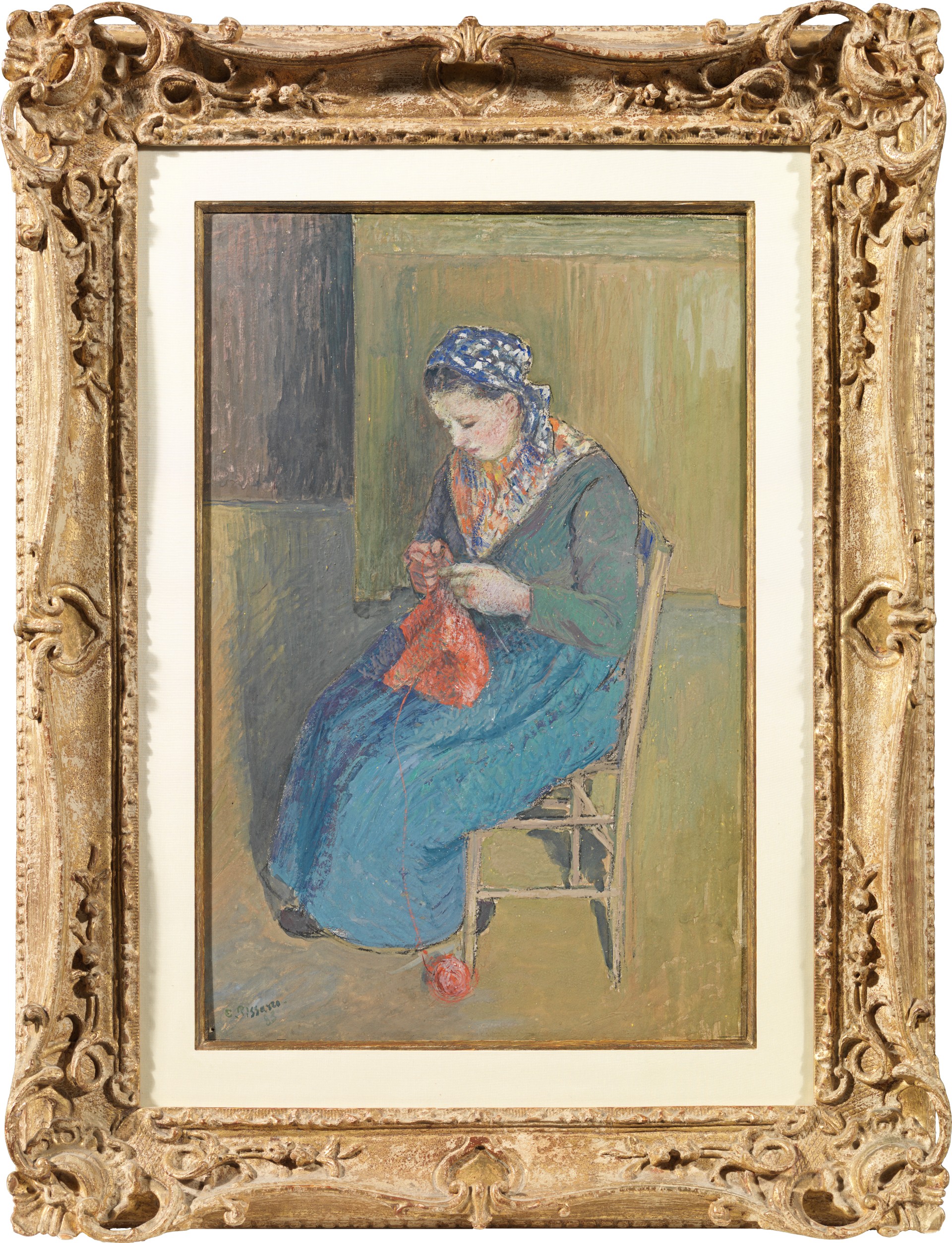CAMILLE PISSARRO
Charlotte Amalie, Saint Thomas 1830 - 1903 Paris
Ref: CL 3702
Paysanne assise et tricotant
Signed and dated lower left: C. Pissarro 83
Black chalk and gouache: 18 7/8 x 12 ½ in / 47.9 x 31.8 cm
Frame size: 27 x 20 ½ in / 68.6 x 52.1 cm
Provenance:
Cotinaud Collection, Paris
Galerie Durand-Ruel, Paris, inv. no.1275
Sam Salz, New York;
Marina Salz, New York, received as a wedding gift circa 1942
Christie’s New York, 9th May 2000, lot 314;
Richard Green, London;
private collection, USA
Exhibited:
Paris, Galerie Durand-Ruel, L’oeuvre de C Pissarro, April 1904, no.149
Paris, Galerie Durand-Ruel, Tableaux et gouaches par C Pissarro, January 1910, no.81
Paris, Galerie Durand-Ruel, Tableaux par Camille Pissarro, February-March 1928, no.110
Literature:
Ludovic-Rodo Pissarro and Lionello Venturi, Camille Pissarro - Son Art, Son Oeuvre, Paris 1939, vol. I, p.269, no.1360; vol II, pl. 265
In the early 1880s Pissarro took a fresh approach to figure painting, which formed the basis of some of his most important work executed between 1880 and 1885. In these works, Pissarro placed less emphasis on the background and focussed on the figure, enlarging it within the composition and thereby drawing the viewer towards the inner state of mind of the sitter. In the 1870s, living in Pontoise, Pissarro had portrayed peasants at agricultural tasks in cottage gardens and fields, with vivid landscape backgrounds. In the early 1880s, having moved to Osny, north of Pontoise, Pissarro often depicted indoor domestic scenes, with gentle tasks such as knitting, sewing and looking after children. Pissarro’s financial position was always precarious; he was lucky in his wife Julie, of peasant stock (she had been his mother’s maid) and an excellent manager of the household. In 1883, when this gouache was made, his seventh child, Jeanne (‘Cocotte’) was still a baby; Pissarro was surrounded by abundant models of domestic life without venturing beyond his front door. The young woman in this gouache is the model for several other works, including the oil on canvas Paysanne se chauffant, 1883 (private collection)[1].
Pissarro excelled in many media – oil painting, pastel, drawing and printmaking – and this gouache is no exception. Pissarro employs tiny, flickering strokes to evoke the light playing over the vivid red knitting, which contrasts strongly with the blue of the woman’s dress. While the figure shimmers with these vibrant touches, the background is calmer and more abstract, with long, vertical striations of paint.
The figure has the quietude of seventeenth century Dutch art, but Pissarro firmly refuted any sentimental or symbolic intent in his figure studies. As an Anarchist, he believed in the dignity of the common man and the virtues of honest work – indeed he preached the need to work hard to his artist sons – but eschewed any narrative in works such as Paysanne assise. Joachim Pissarro writes: ‘Pissarro’s figures are simple…They are not on show and no pretense of any sort animates their action or their pictorial representation. They have nothing to say; they are withdrawn or absorbed by their reverie or their chores’[2]. Pissarro did, however, long for a better age for mankind than the exploitative, capitalist era in which he found himself: ‘ “I believe that there will be another generation who will be more sincere, more studious, and less malign, who will achieve the dream” ’[3].
CAMILLE PISSARRO
Saint Thomas 1830 - 1903 Paris
Camille Pissarro was perhaps the greatest propagandist and the most constant member of the Impressionists and the only one to participate in all eight of their exhibitions. Born in 1830 in the Danish colony of Saint Thomas[4] in the West Indies, of Sephardic Jewish parentage, he went to school in Paris and then worked in his father’s business for five years. Ill-suited to being a merchant, Pissarro decided to become a painter, studying at the Ecole des Beaux Arts and the informal Académie Suisse. He was considerably influenced and encouraged by Corot and to a lesser extent by Courbet.
During the 1860s Pissarro exhibited at the official Salons and in 1863 at the Salon des Refusés. He increasingly associated himself with the Impressionists, especially Monet and Renoir, and with the outbreak of the Franco-Prussian war in 1870 fled to London, where Durand-Ruel became his principal patron and dealer.
After the war, Pissarro returned to France and settled at Pontoise, spending much time with Cézanne, whom he directed towards Impressionism. In 1884 he moved to Eragny. During the 1890s the meadows at Eragny-sur-Epte, looking across to the village of Bazincourt, became one of Pissarro’s principal subjects, painted at different times of the day and year.
In 1885 Pissarro came into contact with Seurat and Signac and for a brief period experimented with Neo-Impressionism. The rigidity of this technique, however, proved too restrictive and he returned to the freedom and spontaneity of Impressionism. From 1893 Pissarro embarked upon a series of Parisian themes, such as the Gare St Lazare and the Grands Boulevards. He continued to spend the summers at Eragny, where he painted the landscape in his most poetic Post-Impressionist idiom. Pissarro died in Paris in 1903.
[1] J Pissarro and C Durand-Ruel Snollaerts, Pissarro: Catalogue Critique des Peintures, Paris 2005, vol. II, p.492, no.739, illus. in colour.
[2] Camille Pissarro, New York and London 1993, p.161.
[3] Quoted in Joachim Pissarro 1993, op. cit., p.163.
[4] Today part of the US Virgin Islands.


